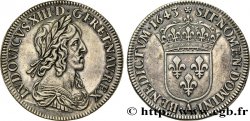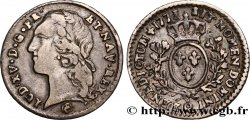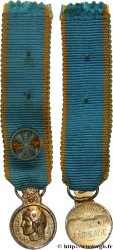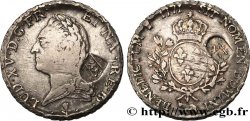正面
正面的文字 GALLIA REDDITA EUROPAE. / APRILE 1814..
正面的说明书 Légende circulaire ; trois fleurs de lis au centre.
背面
背面的文字 AU PACIFICATEUR DE L'EUROPE. / A / I / PARIS..
背面的说明书 Légende circulaire ; "A" cursif ; signature TIOLIER .
评论
历史细节
FIRST FRENCH EMPIRE - PROVISIONAL GOVERNMENT
april 1814
The French campaign, which began in January 1814 and was marked by a few victories for Napoleon, escaped the Emperor at the end of March. On March 29, while his maneuver, carried out in Troyes for a few days, on the rear of the coalition troops - Russians, Prussians and Austrians - to try to divert them from Paris, failed, the Empress Marie-Louise, the King of Rome and the Council of Regency, presided over by Joseph, resign themselves to leaving the city before their imminent arrival. On the 30th, the battle began in front of Paris, in the absence of the Emperor who, learning of the events, tried to return as quickly as possible.. But, he arrives too late – he is in Juvisy at night – and can therefore do nothing to prevent the capitulation of his capital.. On the authorization of Joseph, judging before leaving that the situation was catastrophic, Marmont signs, in the night, with the allies a peace convention which must deliver the barriers of Paris to them the next day at 8 am. On the 31st, the allied forces entered the capital through the Villette barrier, with Tsar Alexander I at their head, followed by the King of Prussia Frederick-William III and the Prince of Schwarzenberg who represented the Emperor of Austria Francis I, who had remained in Dijon with Metternich. The Tsar therefore appears in a position of strength and becomes sole master of the destiny of France.. As soon as he arrives, he looks for an interlocutor. Only the two prefects remained in Paris – Chabrol, at the Hôtel de Ville, and Pasquier at the police headquarters – as well as Talleyrand who should have left with the Regency Council.. Pasquier, in his memoirs, reveals by what sleight of hand he managed to stay. To leave the capital, it was necessary to have a passport which was claimed by the guards controlling the barriers. Arrived at the gates of the city, his cab is stopped, his passport requested. For several minutes, he searches for it in his jacket… nothing.. He then gets out of his cab, searches through his luggage… still nothing.. Faced with the impossibility in which he finds himself to present his passport to them, the guards then forbid him to leave Paris and ask him to return to his home, rue Saint-Florentin.. In reality, Talleyrand played comedy to be able to stay: his passport was in his jacket pocket! This is how he finds himself in Paris when the allies arrive and, faced with the absence of rulers, he has all the cards in hand to negotiate with them.. The evening of his arrival, Tsar Alexander, who was looking for accommodation, initially refused to settle, out of delicacy, in the Tuileries Palace… a delicacy that Napoleon had not had in Moscow. He is offered the Elysée Palace but rumor has it that he is undermined. It was then that Talleyrand offered him hospitality in his hotel on rue Saint-Florentin.. The Tsar accepts. It now remains for him to influence him. Maintaining Napoleon's throne being impossible, four solutions presented themselves to him: the regency which would allow the King of Rome to succeed his father, the restoration of the Republic, the dictatorship of public safety entrusted to Bernadotte, and the restoration Bourbons. It all depends on Alexander. Wishing to establish a lasting peace, he opposed any arrangement with Napoleon but did not come out in favor of any of the solutions.. He seems willing to leave France free of its choice. Talleyrand then decided to take matters into his own hands and confront the allies with a fait accompli.. He managed, on April 2, to obtain from the Senate, where he exercised an undeniable influence, the forfeiture of the Emperor and the suppression of heredity.. Two days earlier, the municipal council of Paris had already declared itself in favor of the restoration of monarchical power in the person of Louis XVIII.. On April 6, Napoleon abdicates and Louis XVIII can ascend the throne. As soon as he arrived, the Tsar expressed his desire to visit the Monnaie des Médailles and the Hôtel des Monnaies in Paris.. On April 5, the administration of the Mints is able to present to Talleyrand, so that he can approve it, the design of the coin to be struck during the visit of the Tsar to the hotel of the Mints. She asks him to indicate the quantity to be minted in order to assess the expenditure which must be covered by a part of the non-monetized materials existing in deposit at the cash desk of the Monnaie de Paris.. About ten days later, he announces the adoption of the project to him but he asks him that the legend of the reverse be in Latin. The change is quickly executed by Tiolier and, on the morning of April 15, the corners are soaked even if the substitution of the Latin legend poses a problem because, to carry it out, it is necessary to engrave new punches which is impossible if Alexandre postpones his visit. until April 19. But fortunately for the administration of the Mints, Alexandre cannot come. So she has plenty of time to modify the caption of the piece. At the same time, the Emperor of Austria and the King of Prussia also expressed their intention to visit the Monnaie de Paris. The manufacture of coins being suspended following the events, only the visit of the workshops and the machines, without showing the use of them, is possible unless a coin similar to that intended for the tsar can be produced for the two sovereigns.. On April 19, the order was given to General Engraver Tiolier to mint three coins. The reverse is common for the three sovereigns. It features the coat of arms of France with the legend Gallia Reddita Europae. The obverse of each coin is different. On that of the coin for Russia, we find the initial of the Tsar's first name and the legend Au Pacificateur de l'Europe followed by the mention of the Hôtel des Monnaies de Paris (Paris) and the signature of Tiolier. For Prussia and Austria, we find the name of the sovereign and the legend Ange de paix also followed by the mention of the Hôtel des Monnaies de Paris and the signature of Tiolier. After the visit, on April 26, 1814, of the Emperor of Austria, and that, on May 6, of the King of Prussia, the administration of the Mints receives, on May 24, the Tsar Alexander. Accompanied by General Sacken, Military Governor of the Place de Paris, general officials of the Mints and special officials of the Monnaie de Paris, she welcomes him as he gets out of his car and leads him successively to several rooms including the mint where gold and silver coins are minted in his presence.







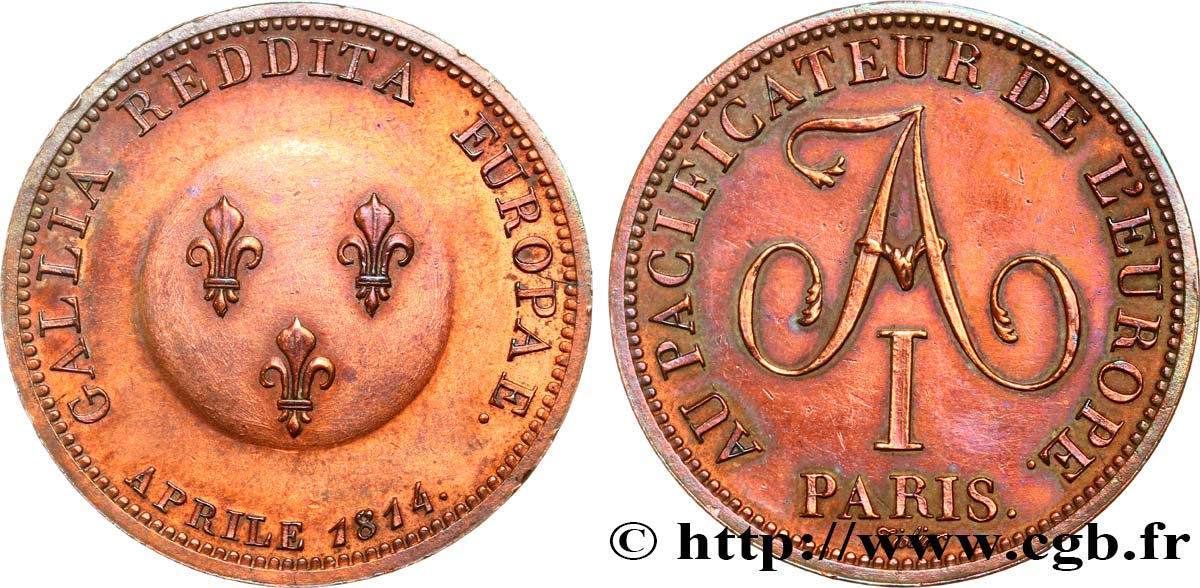
 对产品描述纠错
对产品描述纠错 打印
打印 分享我的选择
分享我的选择 提问
提问 Consign / sell
Consign / sell
 产品介绍
产品介绍
